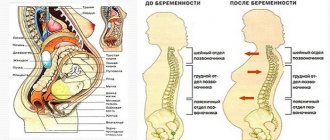Sjögren's syndrome is a rather dangerous disease that is accompanied by unpleasant symptoms; it is common mainly among women. The symptoms of the disease are quite extensive, the signs are divided into glandular and extraglandular. To treat the disease, medications are used, therapy is prescribed after diagnosis.
Sjögren's syndrome can greatly reduce the quality of life, so it is recommended to start therapy as early as possible, especially since modern diagnostic methods make it possible to do this. When treating the syndrome, it is recommended to consult a rheumatologist; therapy is aimed at eliminating the consequences of the disease.
The pathology is the second most common among rheumatic autoimmune disorders; in the United States of America, 4 million patients suffer from it.
What it is
Sjögren's syndrome is a disease accompanied by dysfunction of the salivary and lacrimal glands. The pathology is accompanied by a decrease in the activity of the glands, which leads to increased dryness of the skin, mucous membranes of various organs, a decrease in the synthesis of enzymes, etc.
The first symptoms were described by the Swedish ophthalmologist Sjögren. In 1965, the syndrome began to be considered a disease, both independently developing and capable of causing concomitant pathologies.
Varieties along the stream:
- chronic – accompanied by damage to the glands, begins unnoticed, the patient feels dry mouth, the salivary glands enlarge and cease to function normally;
- subacute - in the initial stages, inflammatory processes occur, fever occurs, the pathology affects the joints, and other important organs and systems are gradually involved.
Treatment of Sjögren's syndrome at home
Treatment of Sjögren's syndrome is permissible at home, but the patient must be registered at a dispensary and periodically visit a medical facility for examinations and medical consultations. A revision of the treatment strategy based on their results is likely.
The prognosis for life with Sjogren's disease is generally favorable. It worsens significantly with the development of lymphomas. Early adequate therapy with the use of glucocorticoids and cytostatics reduces the risk of developing lymphomas several times, improves the course of the disease and work prognosis. Timely treatment can prevent severe ophthalmological, dental and systemic complications.
Prevention is aimed at preventing exacerbation, progression of Sjogren's disease and the development of complications (infections, lymphomas). This is achieved by early diagnosis and adequate treatment, the content of which varies depending on the activity, course and stage of the disease. A targeted search for signs of Sjogren's syndrome in rheumatoid arthritis, systemic connective tissue diseases, and liver diseases is important.
It is advisable to limit visual and vocal stress, the use of thermal procedures, and eliminate the influence of allergenic and stress factors. Vaccinations and X-ray irradiation of the head and neck are contraindicated.
Diagnostics
The disease is not life-threatening, but can significantly worsen its quality and cause disability. The patient can independently diagnose the disease by the absence of tears while cutting onions. If pathological symptoms appear, you should contact a rheumatologist; a dentist and an ophthalmologist also participate in the diagnostic process. Additionally, consultation with an orthopedist, gastroenterologist, or neurologist may be required.
The following diagnostic methods will help accurately diagnose diseases:
- identification of antinuclear antibodies - they are markers of inflammation;
- Schirmer method - the doctor places a narrow strip of filtered paper under the lower eyelid; it should become wet within 5 minutes;
- staining the cornea with a solution of rose bengal;
- sialometry - the functioning of the salivary glands is checked, the secretory properties of the fluid are assessed, the doctor injects contrast into the parotid salivary glands (ducts), after which an x-ray is taken, the procedure allows us to identify dilations of the ducts that accompany the disease;
- salivary gland biopsy;
- examination of the eyeball using a special lamp - allows you to identify moisture in the conjunctiva;
- Ultrasound, MRI - used to visualize inflamed areas of tissue;
- blood analysis.
Sjögren's syndrome is an erroneous reaction in the body that automatically produces antibodies that destroy healthy tissue. The exact causes of the disease have not been identified; as a result of medical research, the most likely causes were identified:
- heredity - the pattern was identified after long observation of twins and families;
- stressful situations, nervous overstrain, overwork, high physical activity;
- viral lesions - in some patients the syndrome developed as a reaction to HIV, herpes, cytomegalovirus.
Reasons for development
The causes of pathogenesis remain incompletely studied, therefore, based on many years of information, it was noted that the disease is caused by environmental factors that negatively affect the body of a person who has a predisposition to the disease. Sjögren's disease is caused by activation of the immune system. In this case, the main role is given to impaired regulation of B-lymphocytes in the blood and the presence of hypersensitivity.
Damage to the exocrine glands leads to degenerative processes, necrosis and atrophy of the acinar glands, and the functionality of salivary and lacrimal secretions decreases. In addition, pathology occurs in the nerve fibers of the glands, which is explained by the presence of dryness or drying out of the cavities.
Location of salivary and lacrimal glands
In simple terms, the causes of the malaise are as follows:
The reason why autoimmune processes spread is the lack of compensation for the body's basic needs.
The reason for the genes is partly legitimate, since genes have the ability to encode and determine the norm of reaction under certain conditions. Thus, the predisposition to the disease of ancestors can affect their descendants.
This disease is most common in women, and in men it manifests itself only 5–10% of the time. This is due to the presence of hormonal levels in women’s bodies during menopause.
Damage to the body due to exposure to various viruses, hepatitis, herpes and rotaviruses cannot be ruled out. This claim is not scientifically substantiated, so there is no certainty about its reliability.
Thus, a woman experiencing frequent mental, physical or chemical disorders is the first contingent for the progression of the disease. In addition to the human glands, the following organs can be affected (during exacerbation):
- Thyroid;
- Liver;
- Kidneys;
- Leather;
- Nerves;
- Joints;
- Lungs.
Due to this, the disease is considered severe and requires immediate therapeutic and diagnostic measures.
Symptoms
All symptoms are combined into 2 main groups:
- systemic (extraglandular) – signs not characteristic of this disease;
- glandular – damage to the glands is observed, as a result of which their functioning decreases.
A constant symptom is considered to be dry mucous membranes during stressful conditions, emotional and nervous overstrain. The development of the disease is accompanied by an increase in pathological signs, dryness is constant, the patient is forced to drink solid food, there is a need to moisturize the mouth and use special moisturizing drops for the eyes.
Glandular symptoms
Keroconjunctivitis - accompanied by itching and redness of the skin of the eyelids, secretion accumulates in the corners. The patient's vision deteriorates, he experiences discomfort in bright light, tearing is observed, the cornea becomes cloudy, and trophic ulcers form in some areas. Due to infection with staphylococcus, purulent conjunctivitis and perforation begin.
Chronic parenchymal parotitis is the second most common symptom of the disease, accompanied by damage to the salivary glands, lymph nodes increase in size, caries and stomatitis occur. At the next stage, dryness of the oral mucosa develops and the salivary glands enlarge. The patient is forced to constantly monitor the moisture in the oral cavity; the symptoms worsen when eating sweets.
In 50% of cases, the disease is accompanied by exacerbations; the process is accompanied by an enlargement of the salivary glands, as a result of which the contours of the face change. The tongue and oral mucosa dry out and turn red, sometimes traces of injury are observed, the consistency of saliva changes, it becomes thicker and more viscous, and is synthesized in small quantities.
Associated symptoms:
- Hoarse voice, inflammation of the mucous membranes, hearing loss due to otitis media. Women experience swelling, dryness and atrophy of the vaginal mucosa, resulting in the development of chronic colpitis; the pathology is accompanied by decreased libido, burning, pain, and itching.
- Decreased sweating and dry skin are also considered common symptoms. In 30% of cases, damage to the apocrine sweat glands located in the area of the external genitalia, armpits, and pubis is observed.
- In 80% of cases, gastrointestinal lesions occur (gastritis, cholecystopancreatitis). Due to a decrease in the secretion of digestive enzymes, sensitivity to fat and milk increases, and disturbances in the functioning of the gastrointestinal tract are observed.
Extraglandular symptoms
Pathological symptoms manifest themselves as follows:
- Painful sensations in the bones while maintaining their structure, the condition is diagnosed after undergoing an x-ray. The pathology in 60% of cases is accompanied by pain and stiffness of movement; the changes are most pronounced in the morning; large joints are affected in rarer cases. 10% of patients experience pain and slight muscle weakness, and in some cases polymyositis develops.
- Tracheobronchitis - occurs in half of the cases, they contribute to an increase in shortness of breath and coughing, pulmonary fibrosis is observed, less often - pleurisy, 30-35% of patients are affected by vasculitis. Small rashes appear on the skin in the form of dots or spots, the patient feels itching, burning, a high temperature is observed, ulcers form, and dead areas of the skin.
- Polyneuropathy is accompanied by a loss or decrease in the sensitivity of the skin of the extremities (feet and hands); brain damage occurs less frequently. The examination also reveals pathologies of the thyroid gland, a multiple decrease in its productivity, and a tendency to allergies to chemicals, medications, and products.
FEATURES OF THE CLINICAL PICTURE
All clinical manifestations of Sjogren's syndrome can be divided into glandular and extraglandular symptoms. One of the first signs of the development of the disease is a symptom complex associated with a decrease in the secretion of ocular fluid, which manifests itself:
- inflammation of the mucous membrane of the eyes;
- a feeling of burning, discomfort, “sand” in the eyes;
- swelling of the eyelids;
- redness in the affected area;
- accumulation of thick white mucous secretion in the corners of the eyes;
- decreased visual acuity;
- photophobia.
With the involvement of the salivary glands in the process, the patient voices complaints of the following nature:
- swelling of the salivary glands, the appearance of a feeling of a foreign body;
- dryness of the mucous membranes of the oral cavity;
- progression of dental caries;
- dryness and inflammation of the tongue.
In the later stages of the disease, dry mouth intensifies and provokes speech impairment, as well as complications in the process of eating. In such patients, cracks appear on the lips, the voice becomes hoarse, and the lymph nodes of the upper body become enlarged. Over time, the disease leads to deterioration of the digestive tract with the formation of atrophic gastritis, which is accompanied by dyspeptic symptoms and a decrease in secretory function.
Extraglandular symptoms are systemic in nature. The most common clinical manifestations include:
- generalized lymphadenopathy;
- polyneuritis;
- inflammation and pain in the joints, feeling of morning stiffness;
- muscle pain and muscle weakness;
- inflammation of the respiratory tract, which is accompanied by a dry cough, sore throat, shortness of breath;
- vasculitis-type skin rashes;
- general intoxication with increased body temperature;
- allergic reactions to antibacterial agents and B vitamins, hypersensitivity to household chemicals, intolerance to certain foods;
- development of lymphomas.
The clinical situation in patients with Sjogren's disease is complicated by the fact that the disease often occurs against the background of other rheumatological problems. This makes it difficult to diagnose the syndrome and leads to rapid complications.
Sjögren's syndrome and pregnancy
After diagnosing the disease, pregnancy should not be canceled; it is not considered a contraindication to conception in the absence of inflammation and organ damage. Provided there is medical control over the patient’s condition before conception, there is no danger; in the early stages, hospitalization is indicated. If any changes occur, the doctor will select an appropriate treatment regimen and medications.
Treatment
Complex therapy allows you to minimize the negative manifestations of Sjögren's syndrome; the choice of therapy depends on the severity of symptoms. Self-medication is strictly contraindicated, as this can lead to worsening of the clinical picture. In the initial stages, taking hormones and immunosuppressants is indicated; they can help improve the condition for years; there is no addictive effect.
The mechanisms of development of the disease are still not fully understood, so there is no specific treatment; glucocorticosteroids and immunosuppressants are used to eliminate inflammatory processes. Their action is aimed at slowing down the functioning of the immune system and reducing auto-aggression.
Quite often the syndrome occurs in a latent form and remains unstudied for a long time. Plaquenil, Methylprednisolone, Methotrexate and their derivatives are most often prescribed. In case of reduced immunity, antibiotic therapy is indicated, which helps reduce the likelihood of infections.
Therapy is aimed at eliminating pathological symptoms:
- decreased secretion of the salivary glands - Pilocarpine and its analogues, taking enough fluid;
- dry eyes - replacement therapy is used, “artificial tears” are prescribed, as well as medications containing hypromellose, it is recommended to use ointments at night;
- exacerbation of autoimmune manifestations - antipyretic drugs;
- myalgia pain, pathology of the musculoskeletal system, severe joint pain, feeling of stiffness - NSAIDs.
Patients should monitor the condition of their teeth; it is recommended to use fluoride-containing toothpastes when brushing, and visit the dentist on a regular basis; one of the mandatory procedures is oral sanitation.
When choosing chewing gum, preference should be given to those that do not contain sugar. If necessary, it is recommended to use a “saliva substitute”. To protect your eyes from unnecessary irritants, it is recommended to wear sunglasses. You should stop taking medications for the common cold, as their use increases the dryness of the mucous membranes of the eyes and mouth.
In some cases, glucocorticoids may be prescribed to help get rid of pathological symptoms and prevent the development of consequences. Taking medications may be accompanied by side effects; the decision on the need to use them is made by the attending physician on an individual basis.
Sometimes it may recommend reducing physical activity and following a diet. In the presence of stable remission, treatment with traditional methods is allowed.
Other methods:
- inclusion of saliva-stimulating foods (mustard, onion, lemon) in the diet;
- refusal of salty, spicy, fatty foods; it is recommended to eat food often, in small portions;
- eye washes, lotions with dill and potatoes;
- rinses with herbs (oak bark, chamomile, etc.).
What is Sjögren's disease
Disruption of the exocrine glands or “dry syndrome” is recorded in 90% of disorders. The main risk group is women whose age is between 20-40 years. The disease also often occurs in patients aged 50-60 years. In men and children, dry Sjögren's syndrome occurs in 30% of all visits. Experts are studying the origin of the pathology, but cannot accurately determine the causes. The main sources are considered to be heredity and the body’s reaction to rotaviruses.
The peculiarity of the condition is expressed in the fact that the pathogenic mechanism triggers an immunoaggressive reaction. The result of this effect is the formation of antibodies. Their action is directed against their own tissues, the lymphatic system and the endocrine glands (damage was detected in 40% of patients). If the generalized form is diagnosed, about 1/3 of patients suffer from myositis (muscle damage), and may also be present:
- kidney damage (nephritis);
- vasculitis (vascular disease);
- interstitial pneumonia.
The disease in some cases develops against the background of such pathologies as:
- rheumatoid arthritis;
- Hashimoto's thyroiditis;
- systemic lupus erythematosus.
Timely diagnostic examination helps to identify Schegner's disease.
Complications
If left untreated, the following complications may occur:
- pronounced nature of symptoms;
- atrophy and smoothing of the papillae, the appearance of folds on the tongue, difficulty swallowing;
- appearance of keratinized skin on the inside of the cheeks, complete disappearance of saliva;
- accession of infections;
- chapped lips;
- tooth loss.
Patients with the syndrome often develop malignant neoplasms, most often lymphosarcoma of the salivary glands; when making a diagnosis, the doctor takes into account a group of signs.
Stages and degrees
Sjögren's disease (symptoms and treatment are associated with the peculiarities of the process) are distinguished by the severity of the symptoms, which can be:
- high. The patient's conjunctiva, cornea and gums become inflamed, the salivary glands are damaged, the lymph nodes are enlarged;
- moderate. In this case, the glandular tissue is partially destroyed;
- minimal. The pathological process affects the glands that produce saliva, and their functions are disrupted. Gastritis and keratoconjunctivitis may develop.
Forecast
Provided treatment recommendations are followed, the prognosis is positive, but systemic manifestations of the pathology are often accompanied by a persistent decrease in working capacity; in the later stages, vital organs are affected.
The most severe consequence of the disease is glomerulonephritis, which can lead to renal failure, tracheobronchitis and arthropathy.
Secondary infections of various etiologies also pose a danger. Women are at risk of having children with heart defects and lupus erythematosus. In 15% of cases, different types of lymphomas are diagnosed; there are no preventive measures for the syndrome.
Classification
The classification of the disease lies in the reasons for the development of the disease in humans, therefore in medicine there are two forms:
- Sjogren's syndrome, which is characterized by the appearance of other autoimmune diseases.
- Sjögren's disease. Arises as an individual type of disease.
There are two types of this disease, which differ in the nature of occurrence and further exacerbation:
- Chronic - caused by an effect on the glands. The nature of the course is slow and often without expression. Has long-term signs of body malaise.
- Subacute - occurs abruptly and is accompanied by activity in various organs.
Sjögren's syndrome is divided according to the reasons for the onset of the disease in the patient, therefore in medical practice the following two main forms are distinguished:
- Sjögren's disease. Develops as an individual type of disease.
- Sjögren's syndrome. Appears together with other autoimmune diseases.
Next, doctors determine the type of pathology, which is classified according to the principle of occurrence and further course. The following options are available:
- Chronic. Caused by the effect on the glands. The disease progresses slowly, without pronounced manifestations, and has long-lasting signs of illness in the body.
- Subacute. It manifests itself sharply and is accompanied by active damage to various organs.
Prevention
In order to prevent the development of Sjögern's syndrome, you should follow the recommendations of your doctor, this will help avoid exacerbations.
Prevention measures:
- reducing eye strain;
- treatment of the cause of the disease against which the syndrome arose;
- avoiding stressful situations.
The disease is not life-threatening; if the first signs are present, you should immediately make an appointment with a doctor; the lack of timely medical care can lead to disability and loss of ability to work; this is associated with damage to important systems and organs.
Prognosis and complications
The development of Sjögren's syndrome does not pose a threat to the patient's life. However, with an aggressive course, the pathology can cause a deterioration in the quality of life. With timely detection and initiation of treatment, it is possible to slow down the increase in signs of this syndrome.
The danger of the disease lies in the high probability of developing severe complications, which can cause disability for the patient. People suffering from this disease often develop lymphoma, vasculitis, malignancies and secondary infections. In addition, inhibition of hematopoietic function and the development of anemia may be observed.












